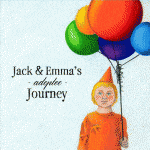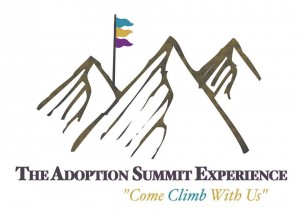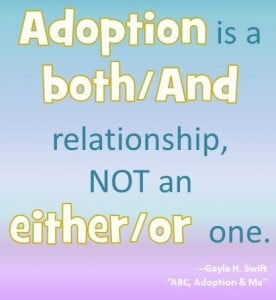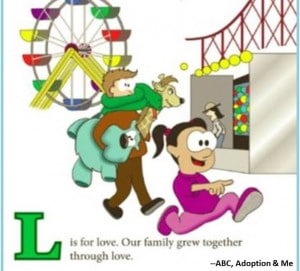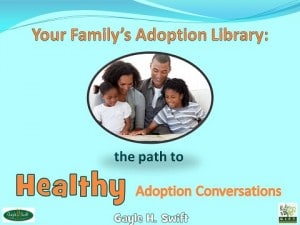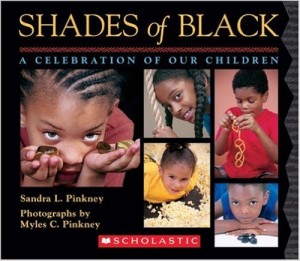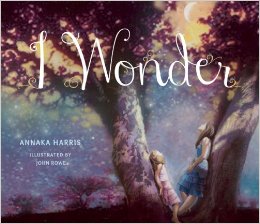 I Wonder by Annika Harris exquisitely illustrated by John Rowe, walks the reader through a dreamy world of beauty and wonder. The story follows a girl and her mother as they wander through the forest. Several things spark the child’s interest. “I wonder…” she says. Mom encourages the girl’s thoughts and resists offering a pat answer. Instead, she encourages her child to sit with uncertainty and use it to spearhead further exploration.
I Wonder by Annika Harris exquisitely illustrated by John Rowe, walks the reader through a dreamy world of beauty and wonder. The story follows a girl and her mother as they wander through the forest. Several things spark the child’s interest. “I wonder…” she says. Mom encourages the girl’s thoughts and resists offering a pat answer. Instead, she encourages her child to sit with uncertainty and use it to spearhead further exploration.
The book also includes a useful Author’s Note page which explains her purpose for writing the book: to encourage children to admit what they do not know, to not be embarrassed by it but rather to be challenged to explore and learn. She challenges parents to do the same! There is value in learning to sit with wonder and in accepting coexisting viewpoints as equally true even if wildly divergent.
Adoption-attuned Lens  Life as an adoptive family is partly steeped in wonder about What if… What if I’d never been adopted? What if other parents had adopted me? What if I’d never placed my child for adoption? etc…. Betty Jean Lifton author of Lost and Found describes this world of unknowable possibilities as the Ghost Kingdom: the lost babies [adoptees], the [birth], parents who lost them, and the [adoptive] parents who found them. Each member of the triad wrestles with significant factors that may never be completely known or resolved. A book like this helps open discussion on some very complex issues without putting the child on the hot seat. Begin with the simple, concrete concepts presented in the book and then, if the children are receptive ask some open-ended questions that, although not specifically adoption-related, can be interpreted as connected to adoption. Follow your child’s lead. Eventually, this book will probably spark some important adoption conversations.
Life as an adoptive family is partly steeped in wonder about What if… What if I’d never been adopted? What if other parents had adopted me? What if I’d never placed my child for adoption? etc…. Betty Jean Lifton author of Lost and Found describes this world of unknowable possibilities as the Ghost Kingdom: the lost babies [adoptees], the [birth], parents who lost them, and the [adoptive] parents who found them. Each member of the triad wrestles with significant factors that may never be completely known or resolved. A book like this helps open discussion on some very complex issues without putting the child on the hot seat. Begin with the simple, concrete concepts presented in the book and then, if the children are receptive ask some open-ended questions that, although not specifically adoption-related, can be interpreted as connected to adoption. Follow your child’s lead. Eventually, this book will probably spark some important adoption conversations.
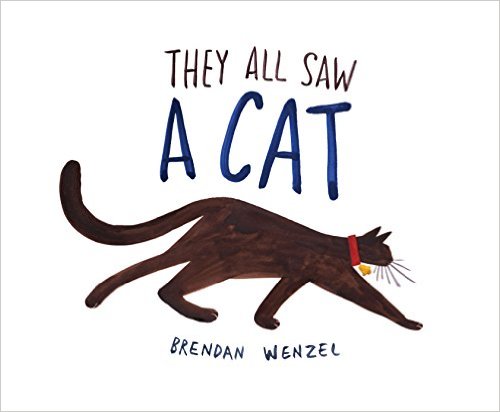 They All Saw A Cat written and illustrated by Brendan Wenzel delights the eyes as it explores a variety of encounters with a cat. Each two-page spread features a drawing that depicts the cat from a new point of view, for example, “A Child, a dog … a mouse… snake … worm … until it comes full circle with the cat admiring his reflection in the water.. The imaginative illustrations hilariously capture how perception colors and shapes reality. Each is true. Each is diverse. Each is personal.
They All Saw A Cat written and illustrated by Brendan Wenzel delights the eyes as it explores a variety of encounters with a cat. Each two-page spread features a drawing that depicts the cat from a new point of view, for example, “A Child, a dog … a mouse… snake … worm … until it comes full circle with the cat admiring his reflection in the water.. The imaginative illustrations hilariously capture how perception colors and shapes reality. Each is true. Each is diverse. Each is personal.
 Adoption-attuned Lens This story can introduce a conversation about how the same situation can be experienced in drastically different ways. For example, a child, a cook, and a turkey all experience Thanksgiving dinner in wildly different ways. As always, talk about the story on a light-hearted level before moving to deeper conversations. Some logical topics: bullying, immigration, and, of course, adoption.
Adoption-attuned Lens This story can introduce a conversation about how the same situation can be experienced in drastically different ways. For example, a child, a cook, and a turkey all experience Thanksgiving dinner in wildly different ways. As always, talk about the story on a light-hearted level before moving to deeper conversations. Some logical topics: bullying, immigration, and, of course, adoption.
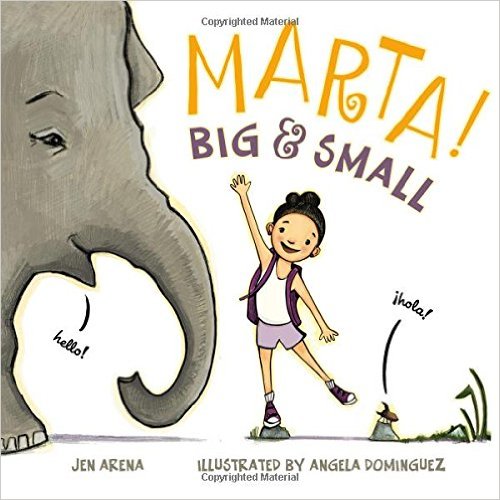 Marta! Big & Small written by Jen Arena and illustrated by Angela Dominguez is a bilingual book which explores a similar theme. This time the multiple points of view focus on the senses: sight, hearing, touch, taste. Compared to a cat, Marta is big. In contrast, an elephant perceives her as tiny! Exuberant illustrations portray the theme well. Spanish words appear in the text and the illustration make it easy for readers to infer the English word. Marta! Big & Small offers a fun romp that will entertain as well as teach.
Marta! Big & Small written by Jen Arena and illustrated by Angela Dominguez is a bilingual book which explores a similar theme. This time the multiple points of view focus on the senses: sight, hearing, touch, taste. Compared to a cat, Marta is big. In contrast, an elephant perceives her as tiny! Exuberant illustrations portray the theme well. Spanish words appear in the text and the illustration make it easy for readers to infer the English word. Marta! Big & Small offers a fun romp that will entertain as well as teach.
Adoption-attuned Lens  Adoptive families dwell in a Both/And world. The same experience can affect each family member in drastically divergent ways. For example, as parents, we thrilled to welcome our children home. We’d hoped and prayed for this to happen. Our children, however, experience adoption in a more complex way.
Adoptive families dwell in a Both/And world. The same experience can affect each family member in drastically divergent ways. For example, as parents, we thrilled to welcome our children home. We’d hoped and prayed for this to happen. Our children, however, experience adoption in a more complex way.
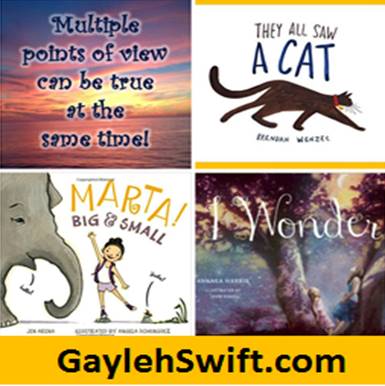 For them, adoption, originates with significant loss (their first family.) Even in open adoptions, where children know and interact with birth family, children lost the opportunity for their birth parents to have raised them.
For them, adoption, originates with significant loss (their first family.) Even in open adoptions, where children know and interact with birth family, children lost the opportunity for their birth parents to have raised them.
Parents, too, had to move beyond the effort to become pregnant and embrace the commitment to become parents via adoption.
The important point which this book can help families understand is that each person’s respective point of view is real, valid and does not alter the perception of other family members. Again, readers are asked to recognize coexisting viewpoints as equally true even in wildly divergent.
Our theme for today’s Diverse Children’s Books linkup is Favorite Diverse Author or Illustrator. Who is your must-read author or must-see illustrator? (The theme is only a suggestion. Diverse posts on alternate topics are always welcome.)
What Is #DiverseKidLit?
Diverse Children’s Books is a book-sharing meme designed to promote the reading and writing of children’s books that feature diverse characters. This community embraces all kinds of diversity including (and certainly not limited to) diverse, inclusive, multicultural, and global books for children of all backgrounds.
We encourage everyone who shares to support this blogging community by visiting and leaving comments for at least three others. Please also consider following the hosts on at least one of their social media outlets. Spread the word using #diversekidlit and/or adding our button to your site and your diverse posts.
We hope this community will grow into a great resource for parents, teachers, librarians, publishers, and authors! Our next linkup will be Saturday, October 15th and on the first and third Saturdays of every month.
Upcoming Theme
Our theme for the current linkup is Favorite Diverse Author or Illustrator. Themes are a suggestion only; all diverse book posts are welcome. If you’re interested, you can start planning now for our upcoming themes …
- October 15th linkup: We will continue the Favorite Diverse Author or Illustrator theme.
Most Clicked Post from Last Time
Our most-clicked post from the previous #diversekidlit linkup is KitaabWorld’s Bilingual Picks. This great round-up post includes bilingual favorites in a range of Asian languages, including Hindi, Bengali, Tamil, and Urdu. There are also links to more titles and more languages at the end of the article.
#DiverseKidLit is Hosted by:
Want to be notified when the next #diversekidlit linkup goes live? Click here to join the mailing list. Interested in joining as a host or an occasional co-host? Contact katie at thelogonauts.com.
(Never participated in a linkup before? Please click here for a more detailed step-by-step.)
Get #DiverseKidLit Recommendations on Pinterest!
We’ve started a new group board on Pinterest to highlight all the amazing posts and resources for Diverse Children’s Books. Please consider following the board for even more great books!

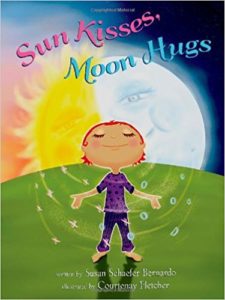 The transition of summer into autumn marks a twist of time that is familiar to all of us, young and old, student and graduate, parent and child. School bells ring across the country, marking the end of summer. Once again, children will leave their homes for the hubbub of school.
The transition of summer into autumn marks a twist of time that is familiar to all of us, young and old, student and graduate, parent and child. School bells ring across the country, marking the end of summer. Once again, children will leave their homes for the hubbub of school.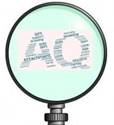 Adoption-attuned Lens: This story might easily trigger a conversation about the connection, longing and questions about birth parents that adoptees have. They may find reassurance in imagining these important people being present in the constants of sun- and moon-shine, raindrops and snowflakes, butterflies and rainbows, storms or changing seasons.
Adoption-attuned Lens: This story might easily trigger a conversation about the connection, longing and questions about birth parents that adoptees have. They may find reassurance in imagining these important people being present in the constants of sun- and moon-shine, raindrops and snowflakes, butterflies and rainbows, storms or changing seasons.

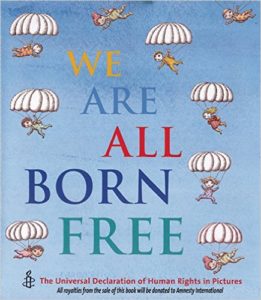
 Adoption-attuned Lens: For adoptive families, I propose two additional rights. First, the right to know one’s roots, to embrace all parts of oneself–both birth and adoptive, to have those roots respected and to be encouraged to discuss adoption freely. Second, adult adoptees should have access to their original birth certificates. Sealed files do not serve the adoptee but are relics of a past that sought to shame and isolate.
Adoption-attuned Lens: For adoptive families, I propose two additional rights. First, the right to know one’s roots, to embrace all parts of oneself–both birth and adoptive, to have those roots respected and to be encouraged to discuss adoption freely. Second, adult adoptees should have access to their original birth certificates. Sealed files do not serve the adoptee but are relics of a past that sought to shame and isolate. Diverse Children’s Books is a book-sharing meme designed to promote the reading and writing of children’s books that feature diverse characters. This community embraces all kinds of diversity including (and certainly not limited to) diverse, inclusive, multicultural, and global books for children of all backgrounds.
Diverse Children’s Books is a book-sharing meme designed to promote the reading and writing of children’s books that feature diverse characters. This community embraces all kinds of diversity including (and certainly not limited to) diverse, inclusive, multicultural, and global books for children of all backgrounds.

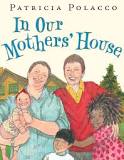 In
In 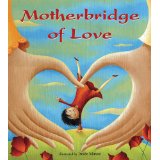
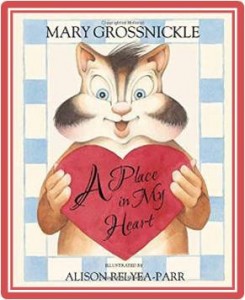
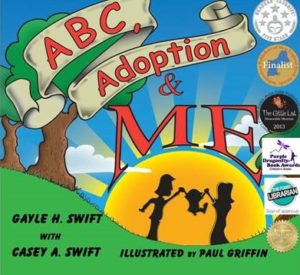
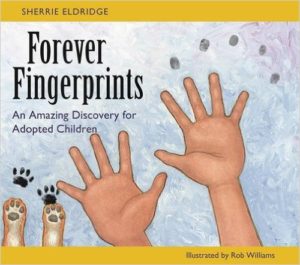
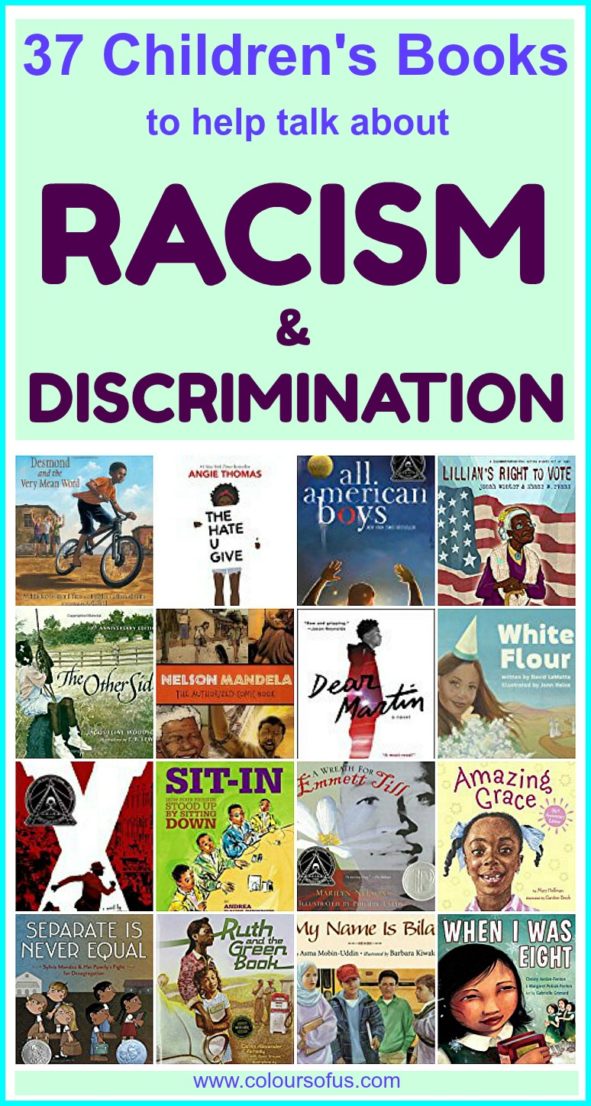



 For them, adoption, originates with significant loss (their first family.) Even in open adoptions, where children know and interact with birth family, children lost the opportunity for their birth parents to have raised them.
For them, adoption, originates with significant loss (their first family.) Even in open adoptions, where children know and interact with birth family, children lost the opportunity for their birth parents to have raised them.
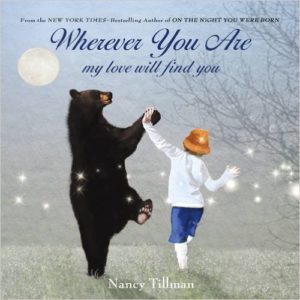 Before tackling the difficult stuff, read books which reassure children and build a firm foundation of security. Nancy Tillman, author of the NY Times Bestselling
Before tackling the difficult stuff, read books which reassure children and build a firm foundation of security. Nancy Tillman, author of the NY Times Bestselling 
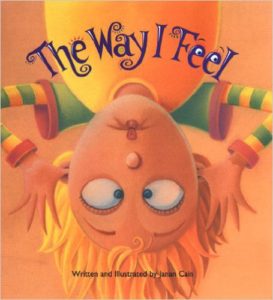
 Ida, Always
Ida, Always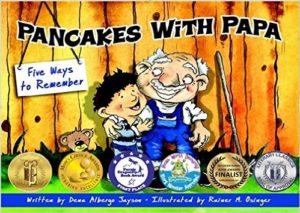
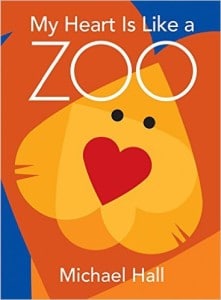 How would you reply if you asked yourself, “What is your heart like?” What would you predict your child might reply?
How would you reply if you asked yourself, “What is your heart like?” What would you predict your child might reply? 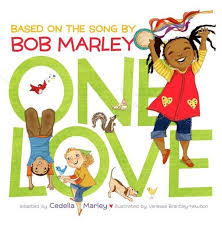 Valentine’s day brings thoughts of love. Add a sprinkle of multiculturalism to your celebrations with the charming One Love by Cedella Marley, daughter of the Reggae artist, Bob Marley. Illustrations by Vanessa Brantley-Newton enliven the text, based on his song, “One Love.” Beautiful multi-media pictures will brighten the reader’s day. The mood of the story is upbeat and positive and reinforces the idea that we are all part of the community of earth, that we all can choose to work, laugh and love together. Five stars
Valentine’s day brings thoughts of love. Add a sprinkle of multiculturalism to your celebrations with the charming One Love by Cedella Marley, daughter of the Reggae artist, Bob Marley. Illustrations by Vanessa Brantley-Newton enliven the text, based on his song, “One Love.” Beautiful multi-media pictures will brighten the reader’s day. The mood of the story is upbeat and positive and reinforces the idea that we are all part of the community of earth, that we all can choose to work, laugh and love together. Five stars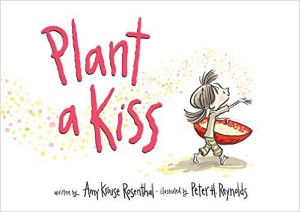
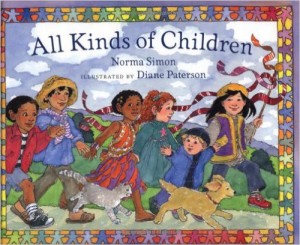 A title like
A title like 

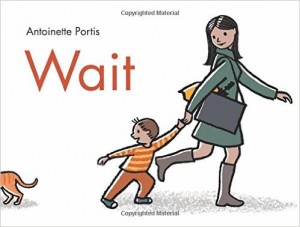

 Zen Ties
Zen Ties
